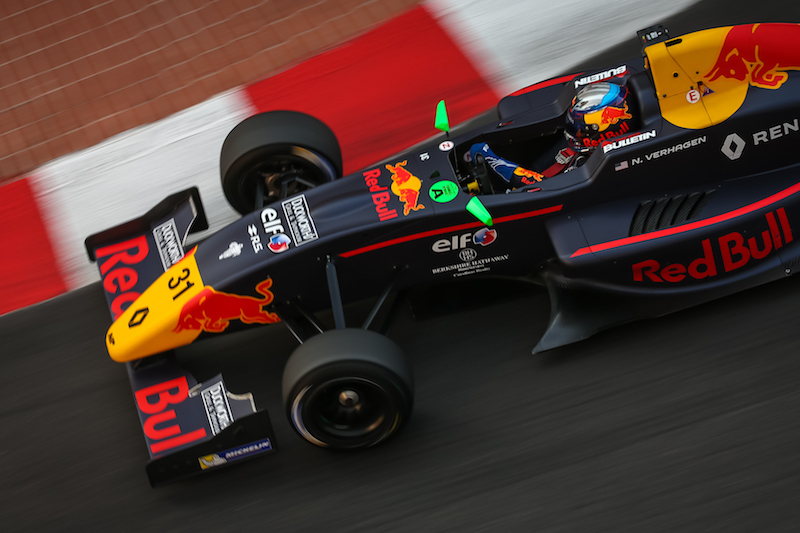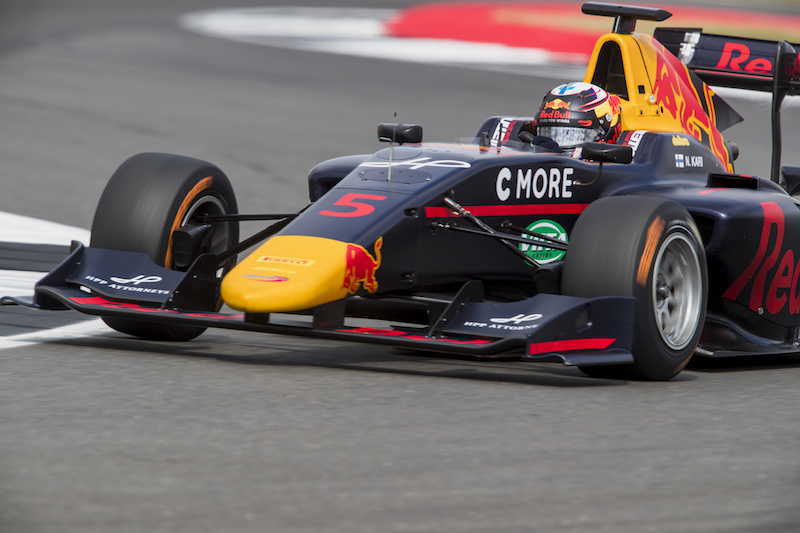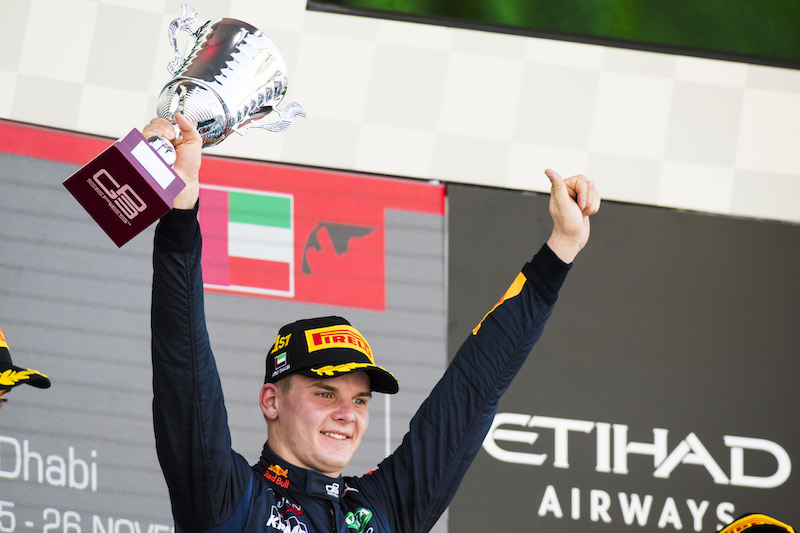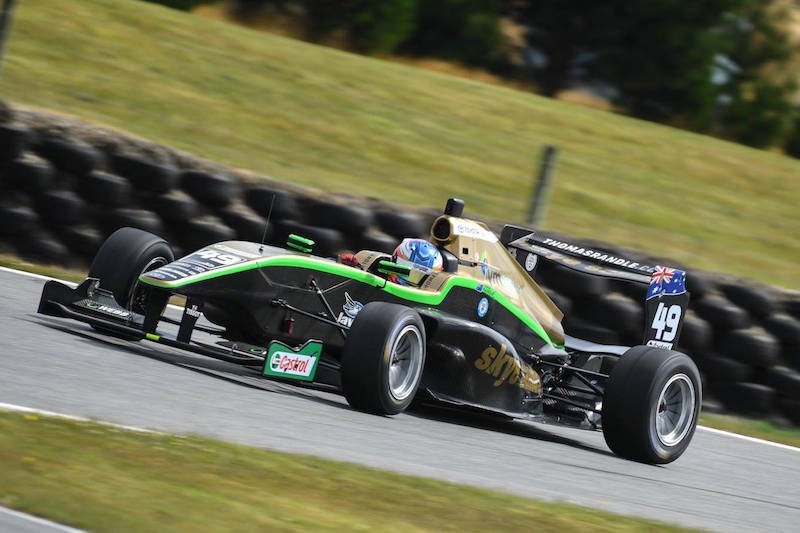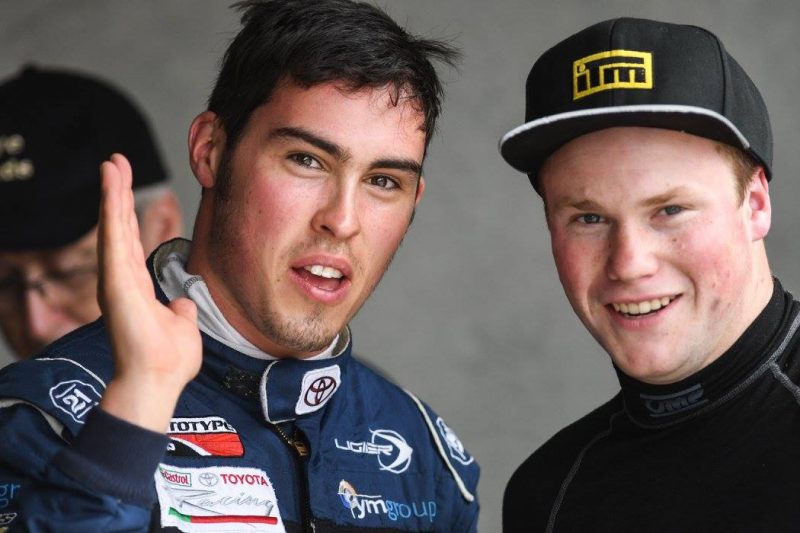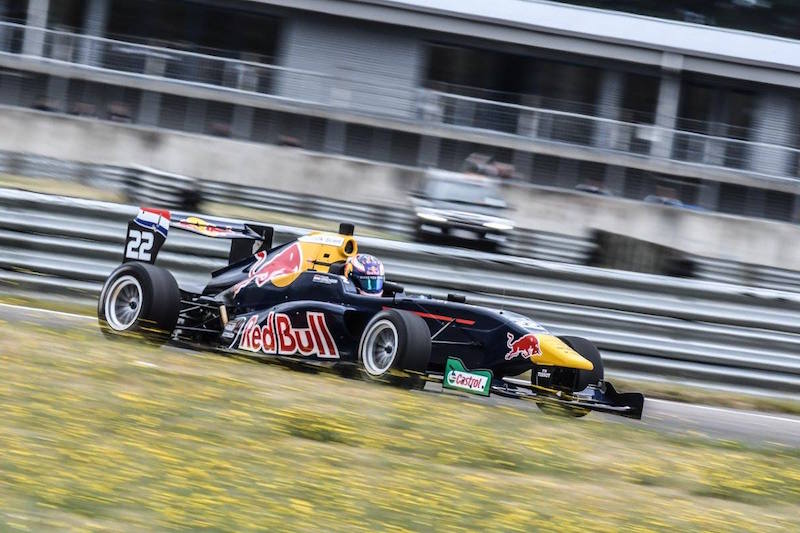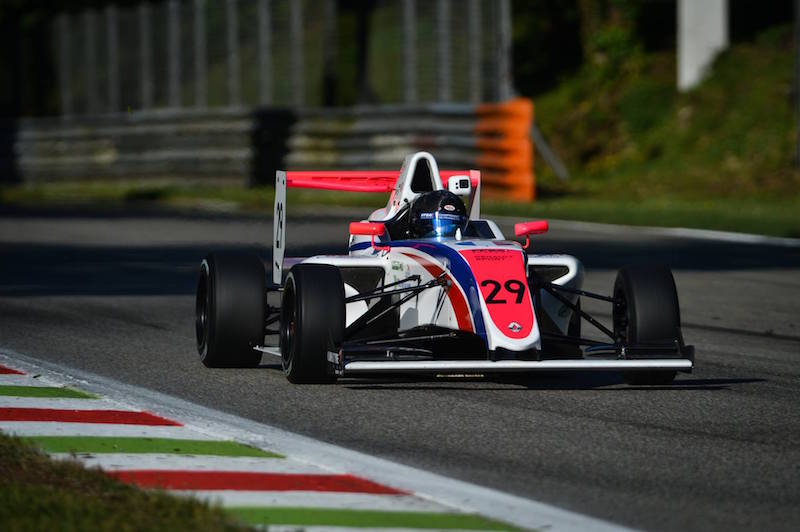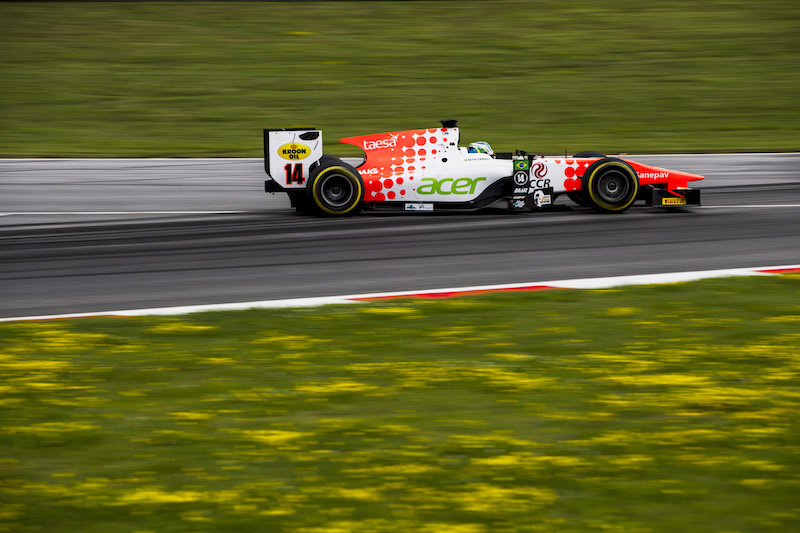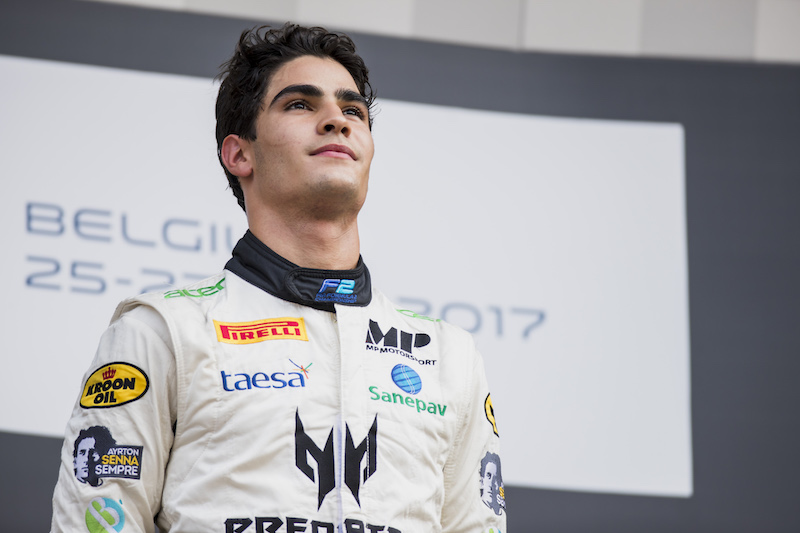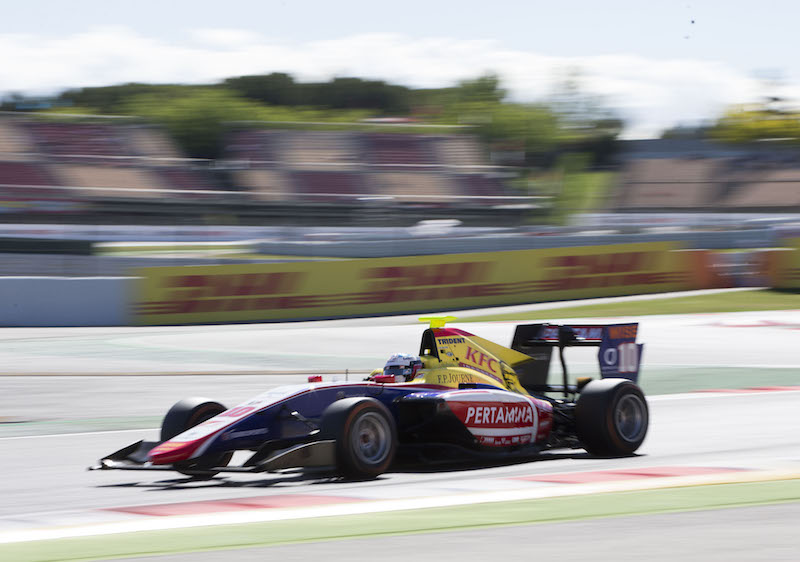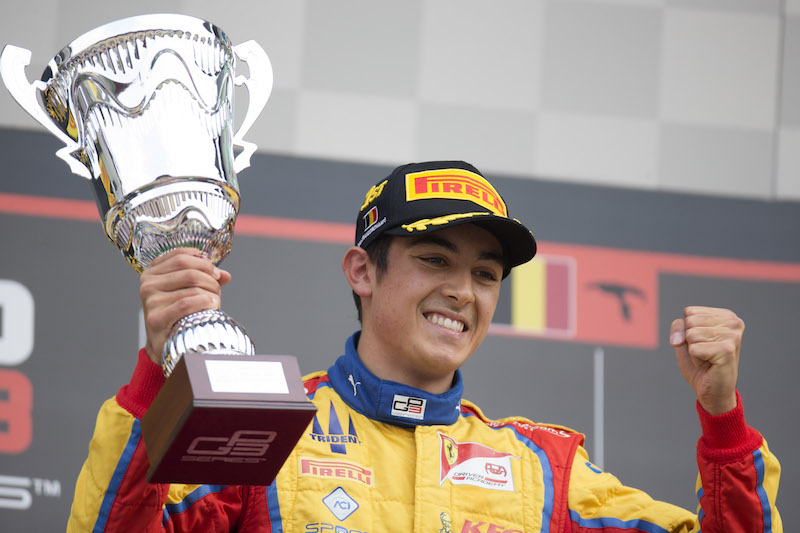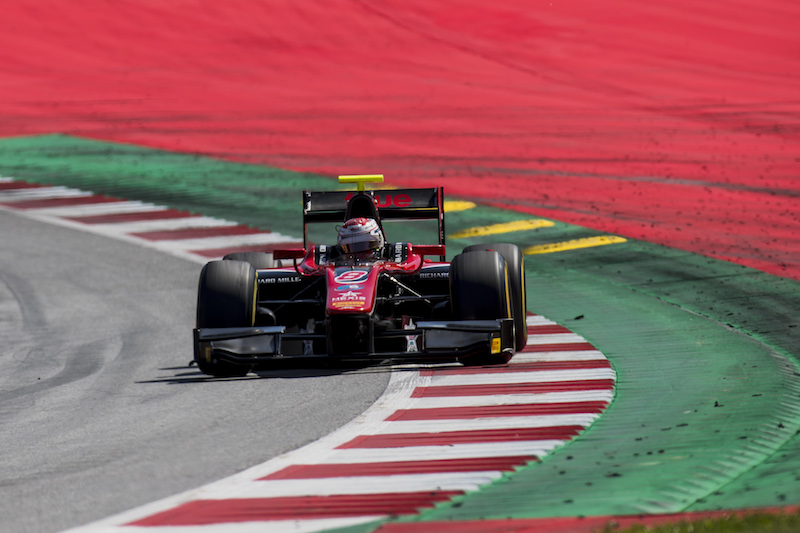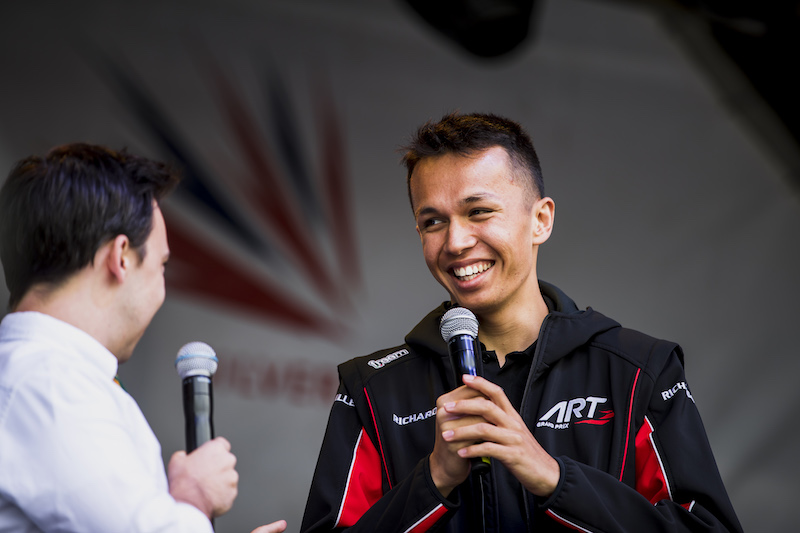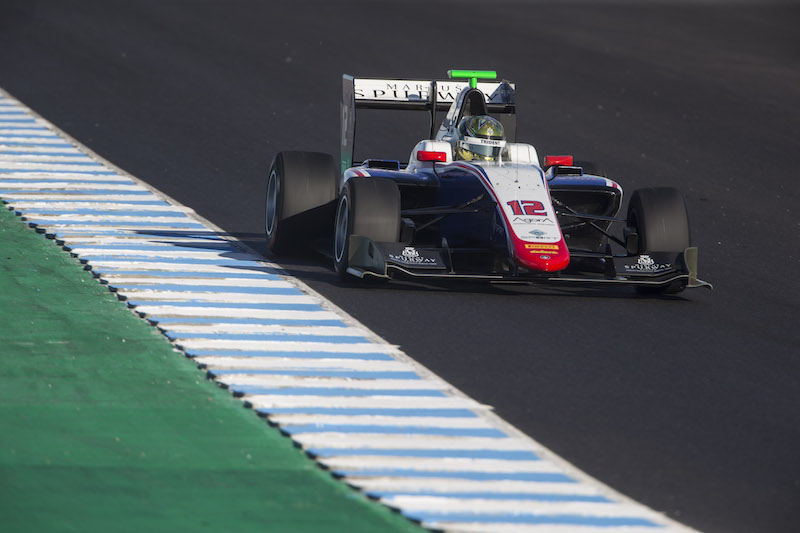Our annual countdown of the best junior single-seater racers of the past 12 months begins with drivers 50 to 41.
50. Neil Verhagen
New entry
Red Bull?s American recruit adapts well in the Eurocup?
As champion of the F1600 Championship Series in the United States, Verhagen was a left-field choice for the Red Bull Junior Team last winter, but he coped well with being thrown in at the deep end in the ultra-competitive Formula Renault Eurocup.
He impressed first time out, carving his way up to fourth from 11th on the grid in the second race at Monza. He went one better at the Hungaroring, when he finished third after starting ninth.
Elsewhere there were difficult days, but there were for all three drivers in the MP Motorsport team, which found the going tough on its return to Formula Renault.
Crucially, Verhagen compared well against well-hyped Red Bull stable-mate Richard Verschoor despite being new to European racing. The pair were often closely matched on pace, and he upstaged the Dutchman to win his first race at Assen in the Northern European Cup.
This may be why it is Verhagen and not Verschoor that Red Bull has kept faith with for another year, and the signs are good for 2018 after he led the way in post-season testing with Tech 1 Racing.
49. Niko Kari
Down 28
Departs Red Bull Junior Team as a GP3 winner
Formula Scout tipped Kari as a dark horse to fight for the GP3 title this year with Arden, but instead of continuing its ART-beating form from the end of 2016, the British outfit had a torrid season and for most of the year, the Finn was never a threat.
On the back foot after missing the weighbridge in Barcelona qualifying and being hit by technical gremlins in Austria, Kari made the podium at Silverstone.
Yet by Spa, Helmut Marko had decided Red Bull would drop the then 17-year-old at the end of the season, even though he would be the only driver to get an Arden car into the points in-between Barcelona and Abu Dhabi. Dan Ticktum was now the chosen boy in the Junior Team, and Kari was rightly stripped of a podium at Jerez for getting his elbows out to stop the Briton passing him.
In Abu Dhabi however, Arden finally found its pace again and Kari maximised the opportunity, sweeping around the outside of team-mate Leonardo Pulcini and champion George Russell at the first corner and controlling the race from there.
It was a reminder of the promise he had shown in F3, which he will hopefully get the chance to show again next year after topping post-season testing with new entrant MP Motorsport.
48. Thomas Randle
New entry
Upstaged bigger names to win Toyota Racing Series
Randle upstaged Formula 1 team proteges to win the Toyota Racing Series at the start of 2017.
After spending 2016 in the BRDC British Formula 3 Championship, Australian driver Randle returned for a second proper attempt at TRS and was among the frontrunners from the start for the lesser-fancied Victory Motor Racing squad, up against M2 Competition?s Jehan Daruvala, Ferdinand Habsburg, Pedro Piquet and Marcus Armstrong and Giles-run Red Bull Junior Richard Verschoor.
At the end of a close competition, Randle went in to the final race one point behind Piquet and one ahead of Verschoor, but made a decisive pass on Piquet to win the championship.
Somewhat absurdly, Randle began the European season not in a single-seater but in the pro-am LMP3 Cup in Britain, but after accompanying his old Formula 4 team-mate Luis Leeds to the opening rounds of the Formula Renault Eurocup, he landed a deal to drive for AVF from Hungary onwards.
Coming in half-way through with limited testing was never going to be easy, but a fourth and a sixth at the Red Bull Ring and a fifth at Spa showed he could mix it in a competitive field within a team that otherwise struggled for results.
47. Richard Verschoor
Down 27
Fought for TRS title at first attempt before tough Eurocup campaign?
Verschoor began the year by confirming his potential with an impressive display in the Toyota Racing Series, but ended it by losing his Red Bull backing after a lacklustre Formula Renault Eurocup campaign.
After his domination of the SMP and Spanish Formula 4 series in 2016, Verschoor proved his ability against more seasoned TRS campaigners on his first trip to New Zealand.
His strong race performances stood out early on, taking two wins at Teretonga to establish a strong lead, which he stretched to 77 points at one stage. Then he and the Giles Motorsport team really struggled for pace over the final two rounds, even though a further win put him within two points of the lead going into the deciding race.
In the Eurocup, he was a disappointment in a season where MP Motorsport never really had the pace to compete at the front.
It took him until the final round at Barcelona to make the podium, by which time he had already been informed by Helmut Marko that it would be his last event with Red Bull.
To be dropped before his 17th birthday due to one poor season in spite of the previous promise was typical Marko ruthlessness.
At least he has already secured a seat at top team Josef Kaufmann Racing for 2018, giving him the platform to follow in the footsteps of Lando Norris and Sacha Fenestraz if he?s good enough. He?s got another crack at the TRS title, too.
46. Victor Martins
New entry
Close to French F4 crown in rookie season
As last year?s junior world karting champion, Martins made the full-time step into cars amid plenty of fanfare, which he quickly lived up to.
He won twice in the first round at Nogaro, and might have done the same at Monza but for race-stopping contact with fellow quick newcomer Charles Milesi that earned him an exclusion.
One of a number of sophomores, rival Arthur Rougier showed impressive progress in his second year to win twice in Pau and three times in Spa to move 36 points clear, but a sequence of second places from Martins allowed him to move back ahead going into the Paul Ricard decider.
Another such result in the first race at the Le Castellet track would have got him one hand on the crown, particularly as he was on for maximum points, but he instead tried to snatch the win on the last lap and spun down the order.
It meant that even when he did return to the top step in the final race, second for Rougier was enough to deny him the title.
Overenthusiasm cost Martins against the sensible Rougier (who finished every race in the top eight), but he certainly showed his potential, and underlined it with rapid Formula Renault testing pace with crack squad R-ace GP ahead of 2018.
45. Sergio Sette Camara
Down 1
A winner in rookie F2 season and Macau Grand Prix leader
In theory, it was always going to be difficult for Sette Camara to make an impression in his first year in F2, making the step up with little more than two years in F3 under his belt and not a single car racing win to his name.
For the first half of the season, it was as hard as had been expected. He had gone into the summer break without scoring a point, even though he had achieved several solid mid-pack qualifying results, as well as challenged Charles Leclerc for pole in Austria before being excluded for a technical infringement.
Then came the breakthrough. At Spa, from 11th on the grid, he finally got himself into the points and with it reversed-grid pole for the sprint race, until Leclerc and Oliver Rowland then got excluded. That was no problem for Sette Camara however, who immediately launched himself from third to first and was never really challenged as he usurped Leclerc to become the youngest winner at that level since Fernando Alonso at the same event 17 years earlier.
He threatened to do similar at Monza a week later, denied only by an unstoppable Luca Ghiotto, and qualified a genuine third at Jerez.
Further proof of his immense talent came by returning to F3 at the Macau Grand Prix and recovering from two crashes to look on course for victory.
That he used his tyres up and ultimately crashed once again showed he has some maturity to add to his game, but that could come from pairing up with Lando Norris at Carlin next year. With a role at McLaren rumoured to be on the way as part of a Petrobras sponsorship deal, he is making an increasingly strong case to be Brazil’s next Formula 1 driver.
44. Kyle Kaiser
New entry
Consistent Indy Lights champion
Kaiser’s run to the Indy Lights title in his third season was effective rather than spectacular, but given that his predecessor Ed Jones won even fewer races (just two rather than Kaiser’s three) and is now a Ganassi IndyCar driver, it would be silly to dismiss him purely on the basis of this.
His campaign was built on his consistency and experience rather than outright speed though: being on pole for just three out of 16 races is rare for a champion. Results in the early races meant that just before he took his first win in race five on the Indianapolis road course, he was only three points off the series lead.
Then, when Matheus Leist hit form over the next three rounds, Kaiser was able to stay out front, before a pair of wins on the streets of Toronto which proved crucial: they put him 52 points ahead, and even a torrid time in Mid-Ohio only reduced that advantage by 10. At the Watkins Glen decider, he only had to start to clinch the title.
It’s easy to knock a consistent approach from a driver more experienced in the series than his rivals, but it’s also worth noting that he’s only 21.
OK, that’s four years older than Colton Herta who was his closest challenger on occasions, but it still makes his maturity an impressive attribute, and one that will only help him when he makes the step up to IndyCar with his long-time Juncos Racing team for at least four events, including the Indy 500.
43. Giuliano Alesi
New entry
Fifth overall in GP3 as reversed-grid king
Alesi?s leap into GP3 for 2016 after just one season in French F4 looked to be more about convenience for father Jean than about a logical career step, and a difficult season unsurprisingly followed.
But 2017 was a big improvement, thanks mostly to three reversed-grid victories in consecutive weekends in the summer, and some promise that at least partly justifies his status in the Ferrari Driver Academy.
The Trident racer finished the year as best-of-the-rest behind the four ART Grand Prix drivers in the standings, but this flatters him a little, as he was only ninth best based on race one scores.
But while his qualifying speed wasn?t a match for team-mate Dorian Boccolacci, his race pace was strong. This firstly got him into a position to be towards the front of the reversed-grid, and then allowed him to stay there during the race.
At Silverstone and Spa he came from 12th on the grid to seventh in race one, and was quick enough to see off Jack Aitken at the former and be out of George Russell?s reach at the latter. In Hungary meanwhile he was decisive enough to get to the front of an all-Trident fight from third on the grid.
A third year in GP3 with Trident is on the cards for 2018, which is logical given his relative lack of racing experience and the room that exists to further improve his outright speed.
42. Alex Albon
Down 36
10th in interrupted rookie F2 season
After pushing Leclerc to the wire in GP3, Albon was a long way from rivalling his former team-mate in F2, but still put in a solid rookie campaign in spite of an unfortunate interruption.
Staying with ART Grand Prix for his graduation, Albon finished all of his first six races inside the top eight. The best finish was a fourth in Monaco, after he had topped his qualifying group and missed out on pole to Leclerc by just 12 thousandths of a second. Not bad for his first time there.
Then he broke his collarbone in a mountain biking crash while training, forcing him to miss Baku. When he returned in Austria, still in pain, he qualified third and managed his first podium in the sprint race, but his 100 per cent scoring record ended with a tough time at Silverstone, and he took points in only three of the next 10 races.
This was a tough period not just for Albon however, with veteran team-mate Nobuharu Matsushita struggling similarly for speed at Silverstone, Spa and Jerez.
Albon ensured he ended the year on a high in Abu Dhabi, coming from the back of the grid (after an exclusion) to seventh in the feature race, and then leading the sprint race until Leclerc battled his way past on the last lap. As was the case for everybody in F2 this year, there was little shame in being outdone by the champion?s brilliance.
Topping the testing times on the final day of action for the retiring GP2/11 will count for nothing in 2018, but Albon could well be a strong force with DAMS.
41. Dorian Boccolacci
Down 17
Sixth in GP3
Boccolacci came into the GP3 season off the back of rapid pre-season testing pace with Trident, and although he couldn?t quite live up to that to truly challenge the ART domination, he was the next-fastest driver and was ultimately rewarded with a win in the final race of the year.
He converted his speed into third on the grid at both Barcelona and the Red Bull Ring but frustratingly fell backwards on both occasions. He did get second in race two in Spain, but his final-lap roll in the Austrian sprint summed up a spell of desperate-looking driving.
More contact at Silverstone earned him a penalty that actually put him on reversed-grid pole for race two, only for a gearbox problem to cruelly prevent him from making the grid.
Later in the year, his qualifying results were not quite so strong, but his consistency in races did improve, and after another second place at Jerez, his reversed-grid win in Abu Dhabi was no less than he deserved ? even if team-mate Ryan Tveter believed he had broken a team agreement by pulling away from him.
What Boccolacci races in 2018 will probably depend on budget, but teams could do a lot worse than put their faith in his speed.
